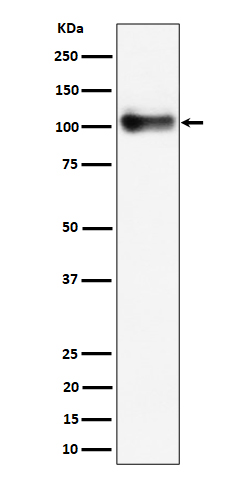
| WB | 咨询技术 | Human,Mouse,Rat |
| IF | 咨询技术 | Human,Mouse,Rat |
| IHC | 咨询技术 | Human,Mouse,Rat |
| ICC | 技术咨询 | Human,Mouse,Rat |
| FCM | 咨询技术 | Human,Mouse,Rat |
| Elisa | 咨询技术 | Human,Mouse,Rat |
| Aliases | AHUS6; BDCA3; CD141; CD141 antigen; Fetomodulin; Thbd; THPH12; THRM; Thrombomodulin; ;Thrombomodulin |
| WB Predicted band size | Calculated MW: 62 kDa ; Observed MW: 105,70 kDa |
| Host/Isotype | Rabbit IgG |
| Antibody Type | Primary antibody |
| Storage | Store at 4°C short term. Aliquot and store at -20°C long term. Avoid freeze/thaw cycles. |
| Species Reactivity | Mouse,Rat |
| Immunogen | A synthesized peptide derived from mouse Thrombomodulin |
| Formulation | Purified antibody in PBS with 0.05% sodium azide,0.05% BSA and 50% glycerol. |
+ +
以下是3篇与Human IgG1抗体相关的重要文献概览(基于公开学术资料总结,非实时检索结果):
1. **文献名称**: *Immunobiology: The Immune System in Health and Disease*
**作者**: Janeway, C.A. et al.
**摘要**: 经典免疫学教材,系统阐述IgG1结构(如Fab/Fc区)、功能(中和、调理作用、补体激活)及在适应性免疫中的核心地位。
2. **文献名称**: *FcRn: The architect behind the immune and nonimmune functions of IgG and albumin*
**作者**: Roopenian, D.C., Akilesh, S.
**摘要**: 聚焦IgG(含IgG1)的Fc片段与新生儿Fc受体(FcRn)互作机制,揭示其如何调控抗体半衰期,为延长治疗性抗体药效提供理论依据。
3. **文献名称**: *Antibody therapeutics in cancer: Current status and future directions*
**作者**: Strohl, W.R.
**摘要**: 综述IgG1抗体在肿瘤治疗中的应用,分析其ADCC/CDC效应优势及工程化策略(如Fc糖基化修饰)对疗效的影响。
4. **文献名称**: *Monoclonal antibody pharmacokinetics and pharmacodynamics*
**作者**: Wang, W. et al.
**摘要**: 探讨IgG1类治疗抗体的药代/药效动力学特性,包括靶点介导清除、FcRn循环等关键因素对临床剂量设计的指导意义。
**提示**:建议通过PubMed或Web of Science检索具体文献,结合关键词“Human IgG1 antibody”“Fc engineering”“therapeutic antibodies”获取最新研究。
Human IgG1 is the most abundant immunoglobulin subclass in human serum, playing a central role in adaptive immunity. As a Y-shaped glycoprotein, it consists of two identical heavy chains and two light chains linked by disulfide bonds. Its structure includes two antigen-binding Fab regions that recognize specific pathogens and a conserved Fc region that interacts with immune cells. IgG1 excels in effector functions: it neutralizes pathogens, activates the complement cascade via the classical pathway, and triggers antibody-dependent cellular cytotoxicity (ADCC) or phagocytosis (ADCP) by binding Fcγ receptors on immune cells.
Notably, IgG1 has a long serum half-life (~21 days) due to pH-dependent recycling mediated by the neonatal Fc receptor (FcRn). This stability, combined with robust effector activity, makes it a preferred backbone for therapeutic monoclonal antibodies. Drugs like rituximab, trastuzumab, and immune checkpoint inhibitors leverage IgG1’s Fc domain to enhance clinical efficacy. However, engineered modifications to its Fc region (e.g., amino acid substitutions or glycosylation changes) are often employed to fine-tune immune activation or reduce side effects.
Balancing target engagement and immune modulation, IgG1 remains pivotal in treating cancers, autoimmune diseases, and infections, reflecting its versatile biological and therapeutic profile.
×